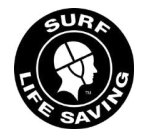(a) In the Open event, all six members of the team shall contest this component of the event. In the U/17 event all four members of the team shall contest this component of the event.
Note: The event scenario in Championship competition shall be judged over a total of 15 minutes with the following time periods:
Set-up 3 minutes
Task 9 minutes
Pack-up 3 minutes
(b) Each team shall be given the same task involving a rescue or number of rescues. First aid or other situations that confront patrols may also be involved. The prevailing conditions of the day shall be taken into account. The team’s assessment will include:
(i) The Patrol Captain’s effective use of the patrol to carry out the task.
(ii) The initiative of Patrol Captain.
(iii) Effecting the rescue(s).
(iv) Effective utilisation of patrol equipment.
(v) Effective use of communications and signals.
(vi) Correct assessment and treatment of patients.
(vii) Use of log books.
Note 1: When developing a scenario for the Patrol Competition the Referee shall consider the tidal range and the potential for changing beach and water conditions over the period from when the first and final teams undertake their scenario task.
Note 2: Consistent with Section 2.12 of this Manual (Setting of Competition Courses), the Referee shall also prepare for and adjust courses, as required, during competition to ensure, as far as possible, fairness for all teams. This includes the placement of provided patrol equipment on the beach, location of rescue scenarios, expected positioning for first aid scenarios etc., so that all are approximately the same distance from the water for each team and/or take a similar time to complete.
Note 3: Competitors must also be aware of, and accept the “Luck of Prevailing Conditions” clauses detailed in Section 2.30 of this Manual.
Note 4: Protests regarding course conditions for the scenario section are only permitted before competitors enter isolation.
(c) All assessments shall be made from the current Public Safety and Aquatic Rescue Manual.
(d) Scoring shall be weighted (this may be done by a spread weighting from a total of 360 points for the Open Team and 240 points for the U/17 Team for the individual parts of the scenario section. These points shall be totalled and divided by the number of team members to give a score out of 60).
(e) The points to be allocated to this section total 60 points maximum.
(f) When entering the designated area for the scenario task, team members shall be wearing their patrol uniform and competition cap and shall carry their First Aid Kit, Air Bag Oxygen Resuscitation unit, one Automated External Defibrillator (AED) Trainer and Open teams will include a minimum of two PDF’s to suite IRB Driver and IRB Crewperson to be used during the Open scenario task. Each team member has the option of wearing one bum bag. No other gear or equipment can be carried by team members.
Note 1: The kit “bum” bag can only house the following items: Gloves (two pairs only), whistle, blank notepad, pen, pocket mask, roller bandage (one only) and triangular bandage (one only). Items that can be included in each bum bag are exclusive from the items contained in the First Aid Kit.
Note 2: First Aid Kits must meet the first aid kit requirements as set out in Appendix D.
(g) Teams will have their equipment checked by an official prior to entering this component of the event.
(h) Teams will be provided with Patrol Log and Incident Report Form and any other equipment required for the scenario shall be made available by the organisers e.g. rescue equipment, stiff neck collars, signage, etc.
(i) Prior to the commencement of the scenario section all teams shall go into isolation and shall be marshalled from the isolation area for the scenario task assessment. The Referee has the discretion to either have the teams that have completed the scenario section, either to return to the isolation area or be permitted to observe any remaining teams completing the section.
(j) The Referee also has the discretion to manage isolation rules in relation to competitors competing in other events. Priority needs to be given to ensuring that isolation protocols are strongly adhered to, to enable effective and fair Patrol Competition conduct. Competitors should be aware of these requirements when entering the Patrol Competition event.

